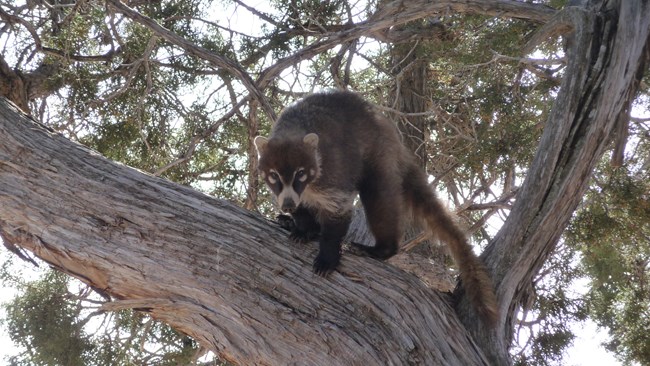
NPS Photo - Carpenter Wildlife commonly seen includes coyotes, mule deer, cottontail and jack rabbits, rock squirrels, white-nosed coati, golden-mantled ground squirrels, cliff chipmunks, pinyon jays, white-throated swifts, turkey vultures, and abundant lizards. Large mammals, including elk, mountain lions, black bear, and pronghorn antelope also frequent the area. The south side of the canyon provides habitat for wild turkey. The steep terrain and secluded side canyons provide habitat for birds of prey like the Cooper’s hawk, sharp-shinned hawk, red-tailed hawk, golden eagle, prairie falcon, flammulated owl, and great horned owl. In addition, the Mexican spotted owl, peregrine falcon, and northern goshawk, among the rarest raptors in the southwestern United States, are residents of Walnut Canyon. Animal populations at Walnut Canyon vary with the seasons and from one year to the next, depending on temperature, rainfall, snowpack, and other environmental conditions both locally and throughout the region. Larger animals, especially, can move about the landscape in search of the best food and water sources. In some seasons, Walnut Canyon suits these needs; in others, it provides a protected natural corridor for wildlife on the move. In all seasons, it is a natural sanctuary and scenic resource located near an expanding area of human development. |
Last updated: July 22, 2022
